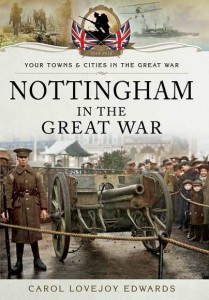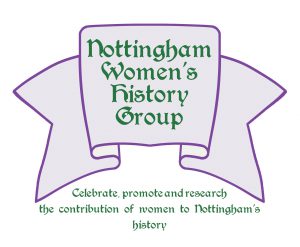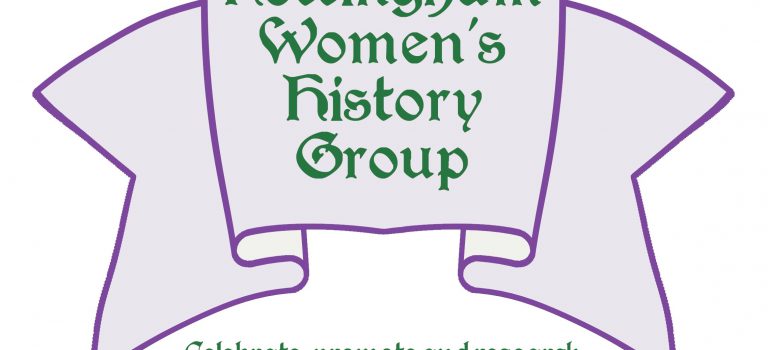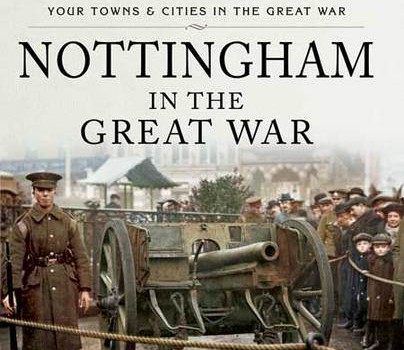John Beckett reviews Nottingham in the Great War by Carol Lovejoy Edwards
 One of the more heartening aspects of the First World War commemorations is that they have not concentrated purely and simply on the Western Front. There are, without any doubt, plenty of reasons for remembering the great slaughter which took place in Belgium and France, particularly during the ‘trench’ period of the conflict, quite apart from the linked conflicts elsewhere in Europe and further afield . But there are also many reasons for remembering the home front, not least the fact that so many families lost members in the conflict and were often left simply to get on with life. Bodies were not repatriated, so the best they could hope for was a name on a war memorial, and perhaps a few personal possessions which might reach them many months after their relative died.
One of the more heartening aspects of the First World War commemorations is that they have not concentrated purely and simply on the Western Front. There are, without any doubt, plenty of reasons for remembering the great slaughter which took place in Belgium and France, particularly during the ‘trench’ period of the conflict, quite apart from the linked conflicts elsewhere in Europe and further afield . But there are also many reasons for remembering the home front, not least the fact that so many families lost members in the conflict and were often left simply to get on with life. Bodies were not repatriated, so the best they could hope for was a name on a war memorial, and perhaps a few personal possessions which might reach them many months after their relative died.
The publishers Pen & Sword have started a ‘Your towns and cities in the First World War’ series, in order to highlight just what those ‘at home’ had to handle. Carol Lovejoy Edwards has written the Nottingham volume, largely through sifting photographs from the Picture the Past Collection,[1] and then surrounding the images with an explanatory text divided into annual chapters 1914-1919.[2] It is written with a light touch, plenty of examples, many of which appear to be from newspapers although none are acknowledged, no great depth, and some occasional errors which suggest the author is not familiar with the city – where, for example, is or was the Southward Council School?
The home front was only partially involved with the actual day to day action on the Western Front because unlike the Second World War the threat from the air was as yet relatively limited. The problem for most families lay at home, not just in respect of sons and grandsons going to war, but also in terms of earning power, fund raising, work, and the occasional threat of a Zeppelin raid. At times food was also an issue, and some responses to war were distasteful in the extreme – notably the attitude to German-born people living peacefully (until August 1914) in the city. Other social changes included women moving into work, taking on roles such as tram conductresses, and shell filling – notably at the Chilwell depot which suffered a catastrophic explosion in July 1918.
What the book does not do is to offer any real depth of discussion. There is nothing on how families coped with separation, death and often serious injury to loved ones? And by stopping with the Armistice in November 1918, there is nothing on returning soldiers and the problems of reintegration, or of memorialisation, or of the impact of the war on the suffragette movement. Anyone who has been to the battlefields, or to the great memorials at Arras, Ypres, Verdun and elsewhere, knows that the war was a tragedy – a generation of young men wiped out, a whole society dreadfully aware of its loss, and a home front on which those left behind struggled to keep life going, and to respond to the call.
Nottingham had its military tribunals from 1916 with the introduction of conscription, and even a handful of conscientious objectors, but in general this was a war which the British accepted as a necessary response to German Imperialism. This book is too lightweight to do real justice to the way in which the people of Nottingham handled a conflict in which they were caught up, and which they felt, for the most part, compelled to accept for the greater good of the state and the Empire. Their job was to act as support for the war, and in general they did a remarkably good job.
[1] www.picturethepast.org.uk
[2] Carol Lovejoy Edwards, Nottingham in the Great War (Pen & Sword, 2015)
 Saturday 1st of April 2017
Saturday 1st of April 2017

 As part of UNESCO Nottingham City of Literature, award-winning British writer Pat Barker will be appearing at Nottingham Playhouse on Wednesday 15 June.
As part of UNESCO Nottingham City of Literature, award-winning British writer Pat Barker will be appearing at Nottingham Playhouse on Wednesday 15 June. 
 One of the more heartening aspects of the First World War commemorations is that they have not concentrated purely and simply on the Western Front. There are, without any doubt, plenty of reasons for remembering the great slaughter which took place in Belgium and France, particularly during the ‘trench’ period of the conflict, quite apart from the linked conflicts elsewhere in Europe and further afield . But there are also many reasons for remembering the home front, not least the fact that so many families lost members in the conflict and were often left simply to get on with life. Bodies were not repatriated, so the best they could hope for was a name on a war memorial, and perhaps a few personal possessions which might reach them many months after their relative died.
One of the more heartening aspects of the First World War commemorations is that they have not concentrated purely and simply on the Western Front. There are, without any doubt, plenty of reasons for remembering the great slaughter which took place in Belgium and France, particularly during the ‘trench’ period of the conflict, quite apart from the linked conflicts elsewhere in Europe and further afield . But there are also many reasons for remembering the home front, not least the fact that so many families lost members in the conflict and were often left simply to get on with life. Bodies were not repatriated, so the best they could hope for was a name on a war memorial, and perhaps a few personal possessions which might reach them many months after their relative died.